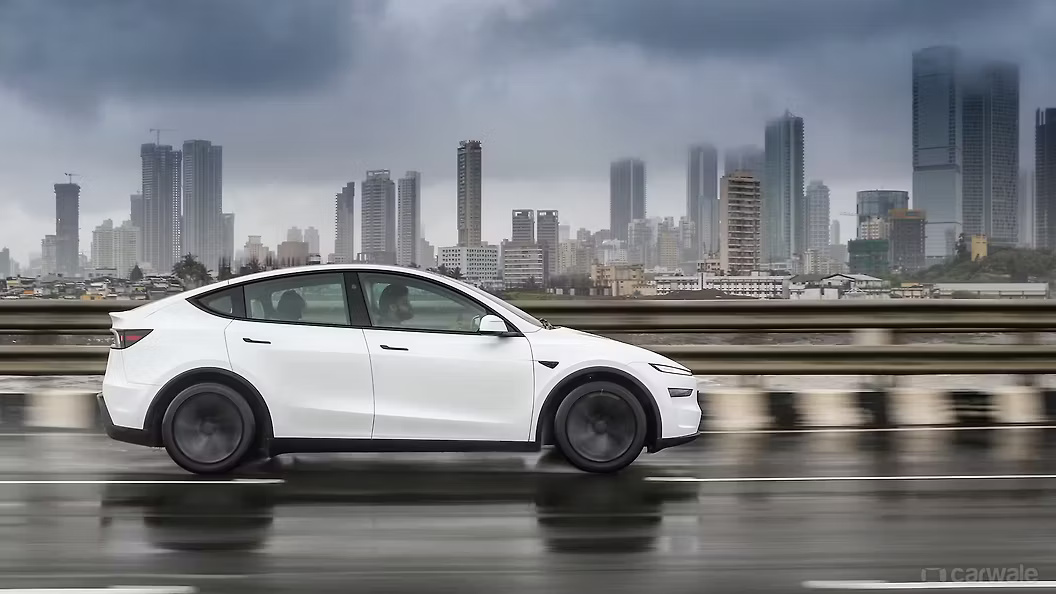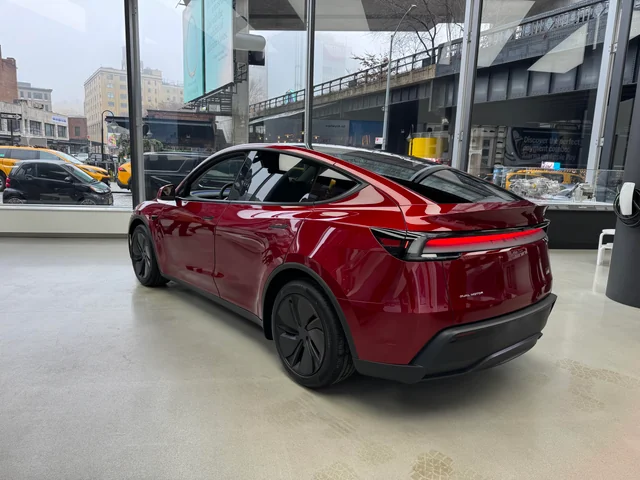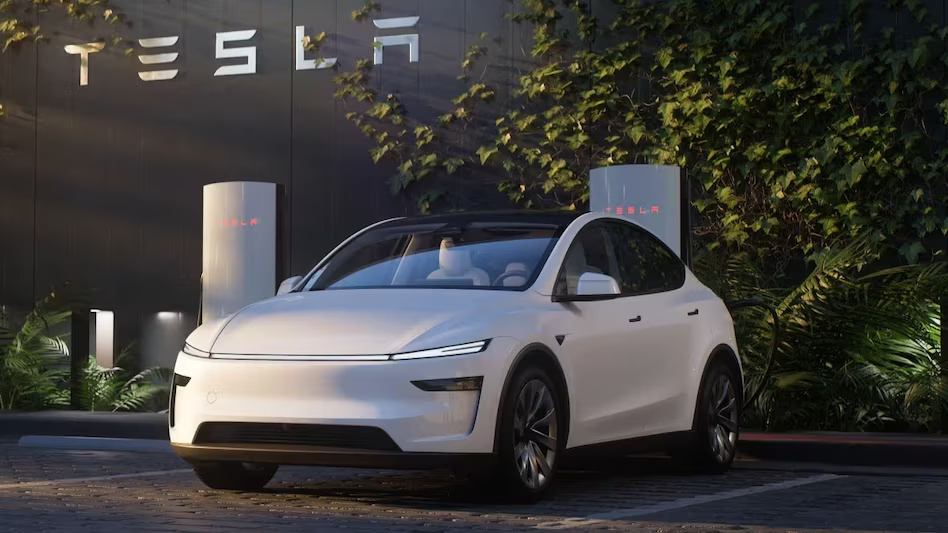Tesla’s much-anticipated entry into the Indian market has finally materialized with the launch of the Model Y, priced at Rs 59.89 lakh for the standard version and Rs 67.89 lakh for the long-range variant. While the price tag may seem steep, the engineering innovations packed into this electric SUV reveal why it became the world’s bestselling car in 2023 and 2024, dethroning even the legendary Toyota Corolla.

The Model Y isn’t just another electric vehicle it represents a fundamental shift in automotive engineering philosophy. From revolutionary manufacturing techniques to cutting-edge motor technology, this SUV showcases innovations that could reshape how we think about car design and production.
Let’s explore the five key engineering highlights that make the Tesla Model Y a technological marvel and understand why these innovations matter for the future of electric mobility in India.
Revolutionary One-Piece Casting Technology
Tesla’s approach to vehicle construction breaks conventional automotive manufacturing rules. Instead of welding together approximately 70 separate parts to create the vehicle’s underbody structure, Tesla employs a groundbreaking one-piece casting method for both front and rear sections.
This innovation relies on Tesla’s custom-built Giga Press, one of the largest die-casting machines ever deployed in automotive production. The machine exerts an incredible 9,000 tonnes of clamping force to create these massive aluminum sections in a single operation.
The benefits extend far beyond manufacturing efficiency. Fewer joints mean fewer potential weak points in the vehicle structure, resulting in improved rigidity and enhanced safety performance. The reduced part count also translates to significant weight savings, which directly impacts the vehicle’s range and efficiency critical factors for electric vehicle adoption.
This manufacturing approach represents a paradigm shift that could influence how future vehicles are built, not just by Tesla but across the entire automotive industry.
Impressive Weight Management Under Two Tonnes
Keeping an SUV of the Model Y’s size under two tonnes is no small engineering feat. Tesla achieves this through a combination of advanced materials and innovative structural design approaches that go beyond traditional automotive engineering.
The company utilizes high-strength aluminum and steel strategically throughout the vehicle structure. However, the real innovation lies in how Tesla integrates the battery pack as a load-bearing structural component rather than simply mounting it to the chassis.
Tesla’s 4,680 battery cells are larger and more rigid than conventional battery cells, allowing them to replace internal steel supports. This structural battery pack doesn’t just store energy it forms part of the vehicle’s floor and directly supports seats and interior components.
This approach delivers multiple benefits: reduced overall weight, improved structural integrity, and more efficient packaging. The weight advantage is particularly important in the Indian context, where this efficiency translates to better range and performance in varied driving conditions.

Advanced Brake-by-Wire System for Autonomous Readiness
The Model Y incorporates a sophisticated brake-by-wire system that eliminates the direct mechanical connection between the brake pedal and the actual brakes. While this technology exists in some sports cars, Tesla’s implementation serves a different purpose entirely.
Tesla’s system operates through two separate electronic circuits one responding to driver input and another dedicated to Autopilot functions. This dual-circuit approach enables seamless transitions between regenerative braking (which recovers energy) and traditional friction braking.
The system maintains consistent pedal feel regardless of which braking method is active, creating a more refined driving experience. More importantly, this technology enables smoother autonomous driving capabilities by allowing the vehicle’s computer systems to modulate braking with precision that exceeds human capabilities.
For Indian roads, where traffic conditions can be unpredictable, this technology could prove invaluable in enhancing both safety and energy efficiency during stop-and-go driving scenarios.
Exceptional Aerodynamic Efficiency
Achieving a drag coefficient of 0.22 for an SUV represents outstanding aerodynamic engineering. Tesla accomplished this through comprehensive attention to airflow management across every surface of the vehicle.
The front bumper design, mirror shapes, wheel configurations, integrated rear spoiler, and underbody airflow have all been optimized to minimize air resistance. Even seemingly minor elements like the rear diffuser contribute to the overall aerodynamic performance.
The notably low and flat nose design, which gives the Model Y its distinctive appearance, serves a crucial functional purpose in reducing drag. Only the BYD Tang EV, with a coefficient of 0.218, achieves better aerodynamic performance in the SUV category.
In practical terms, this aerodynamic efficiency directly translates to extended driving range a critical consideration for electric vehicle adoption in India, where charging infrastructure is still developing.

Innovative IPM-SynRM Motor Technology
The Model Y utilizes Tesla’s unique Interior Permanent Magnet Synchronous Reluctance Motor (IPM-SynRM), which combines the advantages of two different motor technologies into a single, highly efficient unit.
This motor design blends permanent magnet benefits with induction motor characteristics, delivering high performance while minimizing energy losses. The result is improved range and more responsive acceleration compared to conventional electric motors.
The IPM-SynRM motor is also lighter and easier to cool than traditional induction motors, contributing to the vehicle’s overall efficiency and reliability. In dual-motor configurations, Tesla pairs this rear motor with a front induction motor, creating a system optimized for both power delivery and energy efficiency.
This motor technology represents years of research and development, showcasing Tesla’s commitment to pushing the boundaries of electric propulsion systems.
The Broader Impact on India’s EV Landscape
These engineering innovations arrive in India at a crucial time for electric vehicle adoption. The Indian government has set an ambitious target for EVs to comprise 30% of passenger vehicle sales by 2030, supported by subsidies, financing options, and infrastructure development initiatives.
Currently, India’s electric car market represents only 2.4% of total vehicle sales, though this figure grew 20% from 2023 to 2024. Tesla’s entry, while initially limited to the luxury segment, could accelerate broader market acceptance of electric vehicles.
The engineering technologies showcased in the Model Y from structural battery integration to advanced motor designs—may influence other manufacturers to accelerate their own innovation timelines. This competitive pressure could ultimately benefit Indian consumers through improved electric vehicle options across all price segments.
However, challenges remain significant. India currently has only one public charging station per 135 EVs, far below the global average of one station for every 6-20 EVs. The country needs approximately 1.3 million charging stations by 2030 to support its EV adoption goals.
Looking Ahead: Manufacturing and Market Expansion
Tesla’s current strategy involves importing fully-built vehicles from its Shanghai Gigafactory, explaining the premium pricing. However, the company may eventually consider local manufacturing under India’s EV policy, which offers reduced import duties for companies investing at least $500 million in local production facilities.
The engineering innovations in the Model Y particularly the one-piece casting technology and structural battery design could be particularly well-suited to efficient manufacturing in India. These technologies reduce complexity while improving quality, potentially making local production more viable.
As charging infrastructure expands and battery costs continue declining, the engineering advantages demonstrated in the Model Y could become accessible to a broader range of Indian consumers through future, more affordable Tesla models.
The Tesla Model Y’s engineering innovations represent more than just impressive technology they offer a glimpse into the future of automotive design and manufacturing. While the initial market impact may be limited by pricing and infrastructure constraints, these technological advances could help accelerate India’s transition to electric mobility and establish new benchmarks for the entire automotive industry.
FAQs About Tesla In India 2025
Q1. What makes the Tesla Model Y unique in the Indian market?
The Tesla Model Y stands out due to its cutting-edge engineering innovations, such as one-piece casting, advanced electric motors, and highly efficient battery technology, making it a leader in electric mobility.
Q2. Will the Tesla Model Y in India have the same features as the global version?
Yes, Tesla aims to offer the same standard of quality and innovation in the Indian market as the global version, although local regulations and customer preferences may influence some minor adjustments.
Q3. How does the one-piece casting improve the Model Y?
The one-piece casting reduces production complexity, enhances structural integrity, and lowers manufacturing costs, which could translate to better pricing and durability for customers.
Q4. Is the Tesla Model Y suitable for Indian road conditions?
The Model Y has been engineered to adapt to diverse driving conditions worldwide, and Tesla is likely to tailor it to meet the challenges of Indian roads, such as ground clearance and climate adaptability.
Q5. What is the expected charging infrastructure for the Tesla Model Y in India?
Tesla is anticipated to invest in expanding its Supercharger network in India, along with collaborations to promote accessibility to compatible charging points across key cities and highways.
For More Information Click HERE
